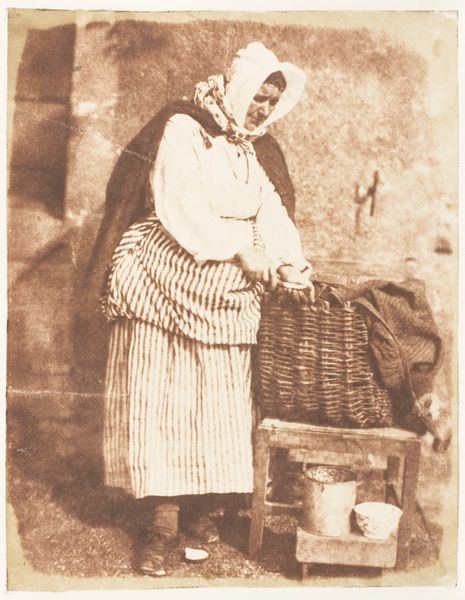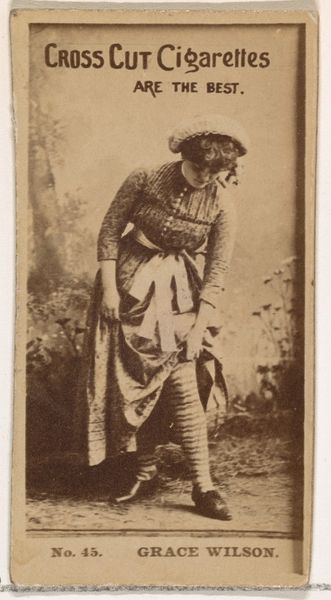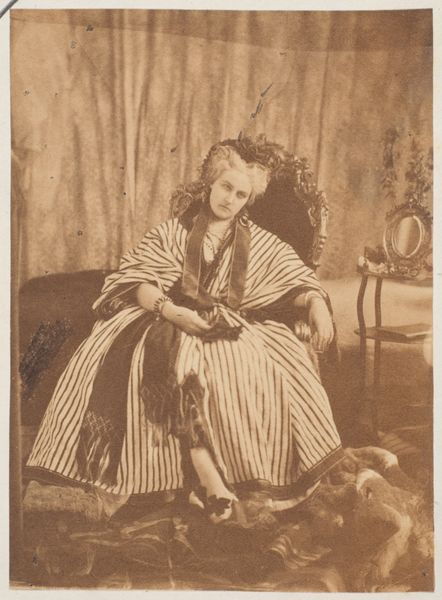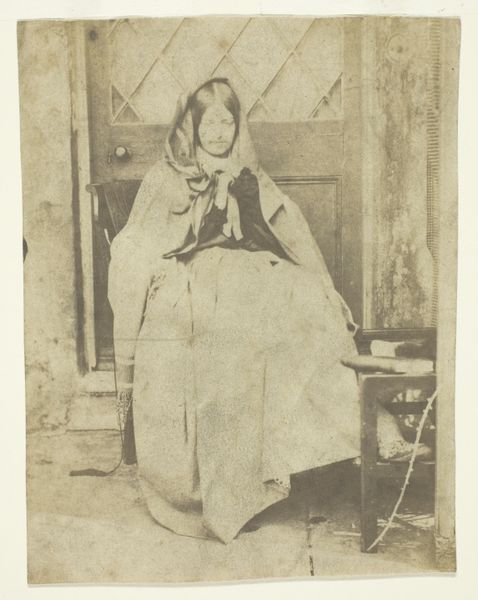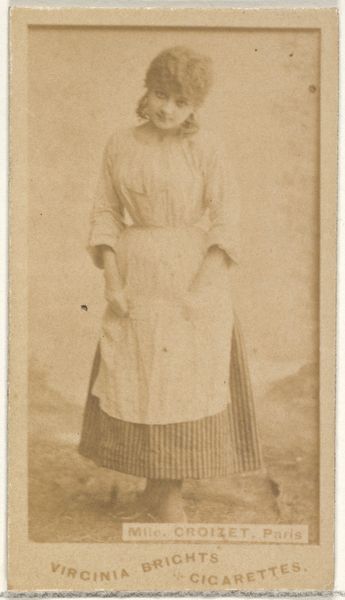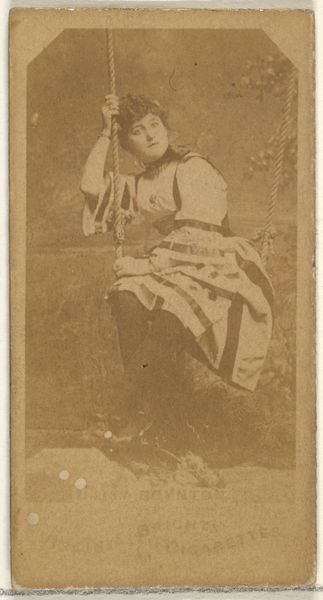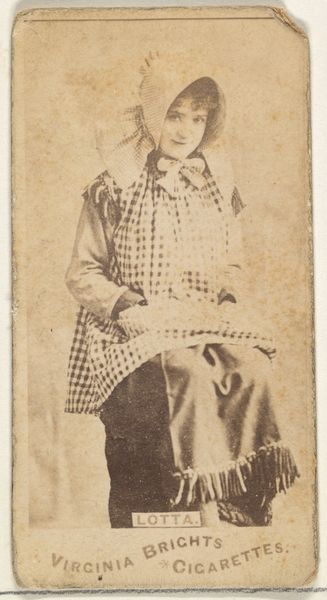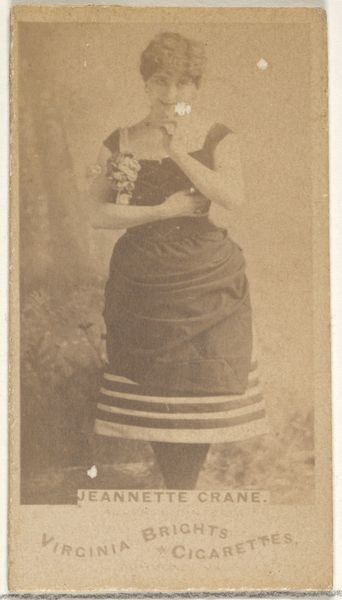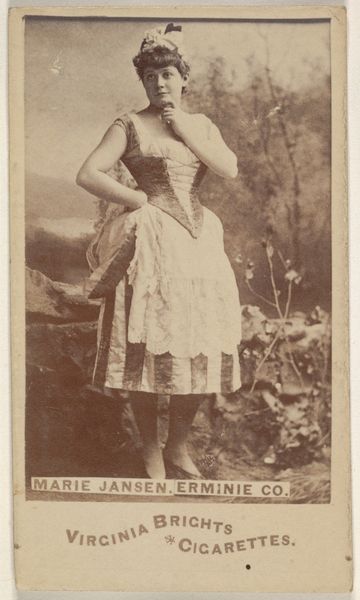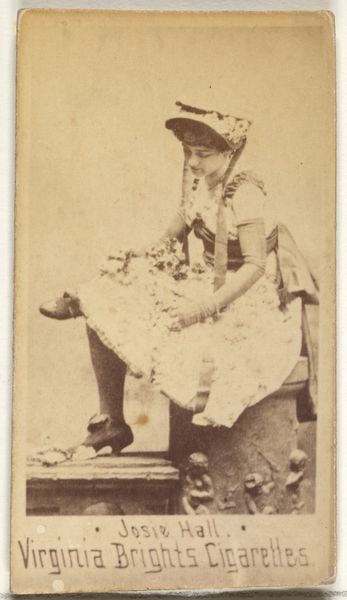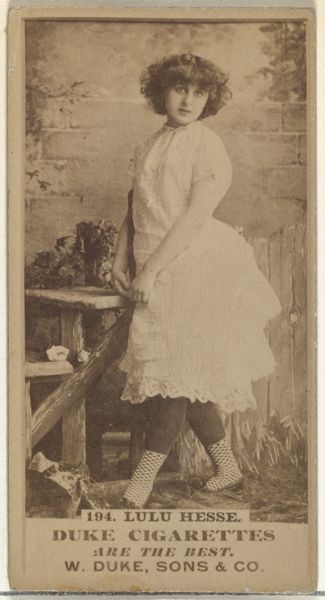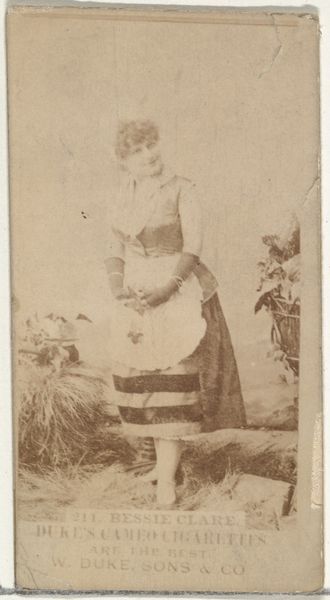
daguerreotype, photography
#
portrait
#
daguerreotype
#
photography
#
romanticism
#
19th century
#
men
Copyright: Public Domain
Editor: Here we have "Newhaven Fishwife," a daguerreotype dating from 1843-1847, made by Hill and Adamson. There’s a remarkable stillness and strength in her expression. What can you tell me about this work? Curator: It’s compelling, isn't it? Beyond just being a portrait, it captures a moment of early documentary photography. Consider the power dynamics at play. Hill and Adamson were middle-class artists representing a working-class woman. To what extent were they capturing her reality, and to what extent were they imposing their own romantic ideas onto her? Editor: That's interesting. So, it's not just about a literal representation? Curator: Exactly! Look at the way she’s posed. Is it natural, or staged to fit certain societal expectations? What does her gaze convey, or perhaps conceal? This was during a time of enormous social change, so her very presence in this image is a kind of statement. And remember the colonial context! Editor: Colonial? How does that connect? Curator: Think about how the industrial revolution impacted gendered labor roles in this era. What kind of work was considered visible or valued? By depicting her in her working clothes, are Hill and Adamson honoring labor, or perhaps romanticizing it from a privileged viewpoint? How would it read differently today? Editor: That's given me a lot to think about – more than just seeing a photograph. I hadn't considered it in such a broad social context before. Curator: And that’s the beauty of engaging with art! It allows us to question, to dissect, and to reflect on both the past and the present.
Comments
No comments
Be the first to comment and join the conversation on the ultimate creative platform.
